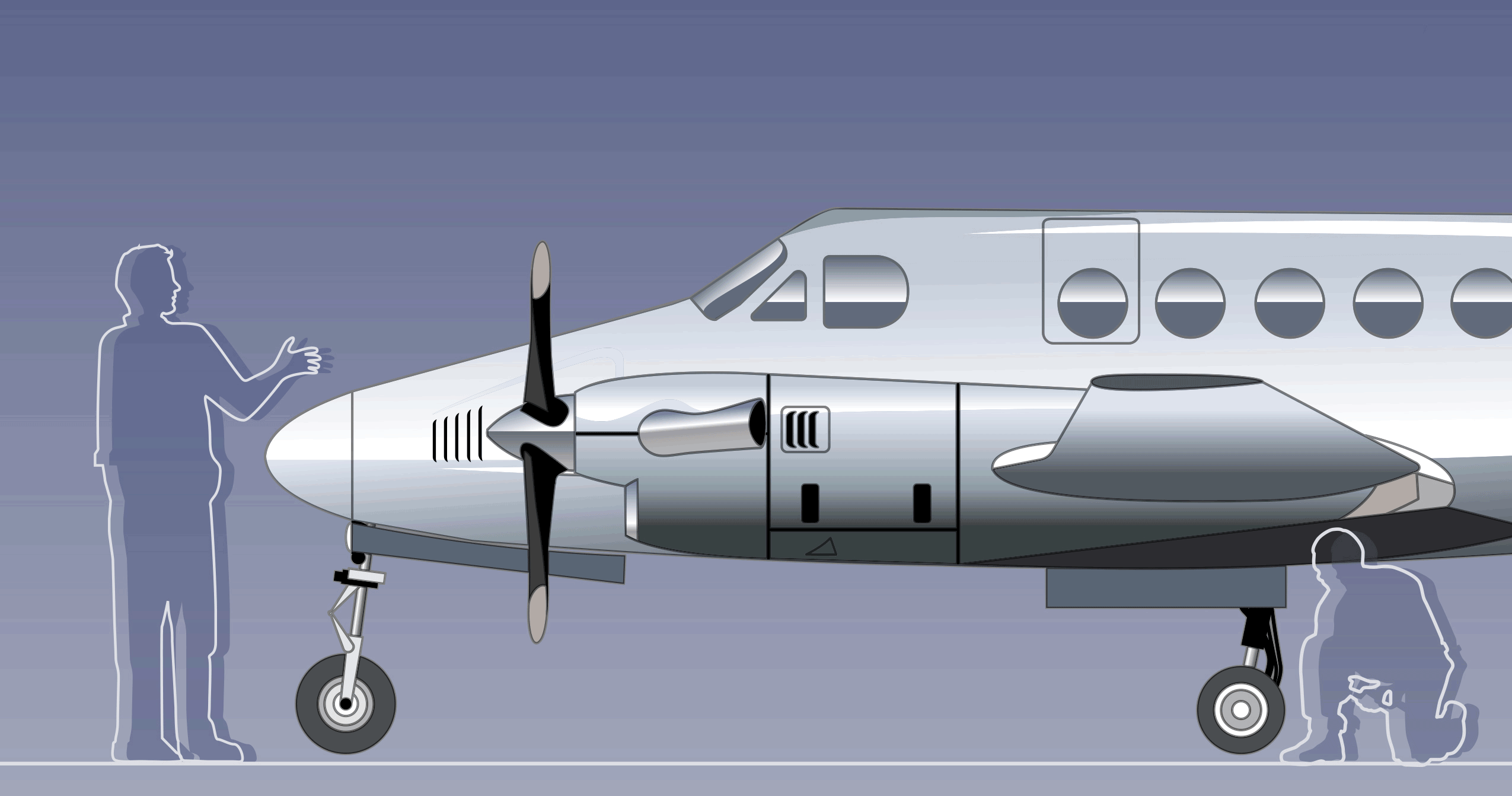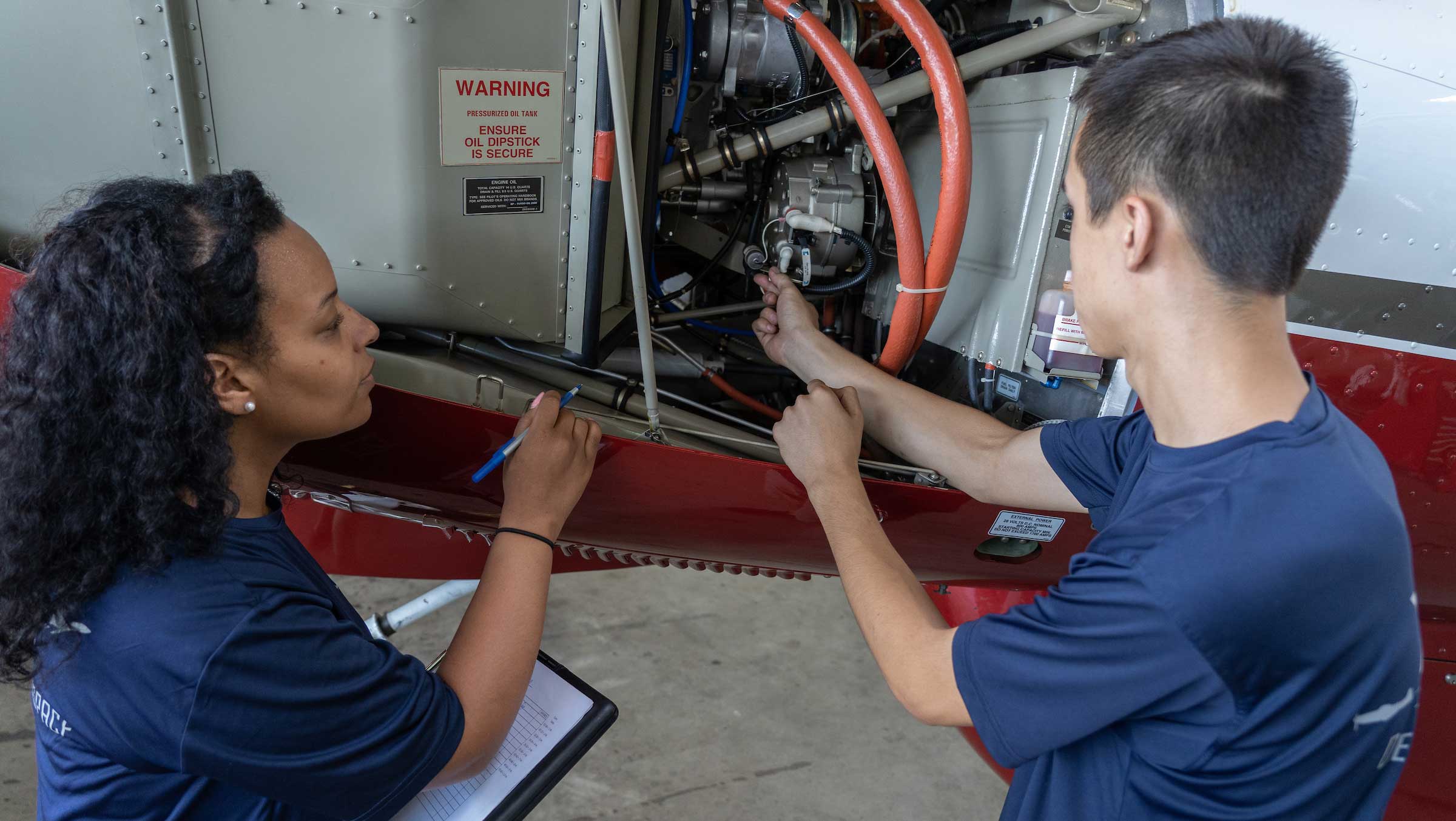
Solving the workforce challenge requires retaining talent and attracting young people to the industry.

Oct. 29, 2018
As demographic shifts and an increasingly competitive labor market impact the business aviation maintenance workforce, companies must invest in their talent to keep up.
The numbers paint a stark picture of the looming challenge. Nearly 30 percent of the current technician workforce is approaching retirement age, and Boeing estimates 118,000 new ones will be needed across North American civil aviation in the next two decades. Already, nearly 90 percent of business aviation leaders surveyed by Aviation Personal International in 2017 felt the industry was in the midst of a maintenance shortage.
“All the buzz has been about the pilot shortage but if you drill into the real dilemma, the need is far greater for maintenance technicians and avionics technicians,” said Marlin Priest, founder and CEO of Pioneer Aviation Management, LLC.
Several factors are contributing to the crisis. One traditional pipeline, the military, is experiencing shortages of its own. The Air Force alone reported a 4,000-maintainer shortage in 2015, and though the gap has since been narrowed through expanded recruiting and retention efforts, there remain shortfalls of the most experienced technicians. Also, educational trends favoring undergraduate collegiate education over vocational train-ing have resulted in a disproportionately older skilled-trade workforce. The average age for an aircraft technician is about 51 – nine years older than the median worker age for the rest of the country, according to the U.S. Bureau of Labor Statistics.
“The guy who’s going to work for you for 10 to 20 years, happy turning wrenches and making the money you pay him, with maybe a two- to three-percent increase each year is out there, but they’re getting harder to find because the labor pool has shrunk,” said Zach Ungerleider, a former director of maintenance now working in sales with Textron Aviation.
DOUBLING DOWN ON TOP WORKERS
“A big part of the retention formula is investing in people,” said Nathan Winkle, a former director of maintenance, president of Thoroughbred Aviation and chair of the NBAA Maintenance Committee. “Whether that means extra training or different project experiences, managers need to understand what their people need and invest in their careers.”
Professional development is increasingly critical to employee engagement, especially for the youngest workers. In a 2016 Gallup study, 87 percent of millennials said that professional or career growth and development opportunities are important to them. Within aviation maintenance, these can include specific aircraft training and the opportunity to obtain accreditations, such as NBAA’s Certified Aviation Manager credential.
In addition to training, Winkle advises managers to encourage employees to attend industry events, where they can make valuable connections throughout the wider community. “Whether it’s being part of an advisory board for an OEM or participating on a committee, it’s so important to stay engaged in the bigger picture,” said Winkle.
Identifying ambitious employees and keeping them engaged with growth opportunities is vital to retention. Leon Holloway, manager of human relations with Duncan Aviation, recommends working with such employees to create a plan that benefits both the company and the individual.
“Reevaluate that growth plan with them every 60 to 120 days, and keep open communication about how it is going,” recommended Holloway. “At the same time, you’re asking them, ‘What are you bringing to the organization? Where do you see yourself in 5-10 years?’ We can put you where you think you’ll fit and be productive, but half of that is on the employee to identify the long-term benefit to both parties.”
Naturally, there’s a risk that employees who expand their expertise and build industry connections will dis-cover new employment opportunities. However, Winkle says that, in his experience, the long-term benefits of facilitating career advancement out-weigh the short-term costs of potentially having to replace an employee.
And while it’s important to provide ambitious employees with professional development opportunities, quality workers without management aspirations should also be treated as assets worth developing.
“Some people are going to be happy being a maintenance technician and work-ing on airplanes until they retire because that’s what they love,” said Winkle. “That’s perfectly fine, but that doesn’t mean you shouldn’t train them on newer systems and bring them to conferences.”

ONBOARDING FOR SUCCESS
One issue frequently mentioned by maintenance hiring decision-makers is the gap between the current A&P curriculum and the knowledge and skills demanded by operators. At a recent meeting of aviation maintenance school directors, Priest noted that one of the biggest complaints heard is that graduated students are not work-ready.
“One operator said it can take up to a year in additional training on the aircraft and internal processes before his company is comfortable putting new hires on the floor, working on a high-value asset,” noted Priest.
With so much invested in new employees, it’s critical that companies take advantage of the initial onboarding period to immerse new hires in the company culture and establish a structure that will enable them to succeed. The stakes are high. A 2009 Aberdeen Group study of senior executives and HR professionals found that 86 percent of respondents felt a new hire’s decision to stay with a company long-term is made within the first six months of their employment.
“Simply put, it’s your first opportunity to impress your new hire, and if you don’t do it well, that’s strike one already,” said Holloway.
When it comes to onboarding, even small gestures can make a big difference. Before new hires at Duncan Aviation arrive for their first day, the company sends them a welcome kit that outlines the company’s history and what they can expect on their first day. They also are personally greeted by company owner Todd Duncan – an “awesome investment in that first impression,” says Holloway.
Onboarding is also an opportunity to help new employees understand a company’s values and purpose. Justin Daugherty, director of maintenance for a Part 91 operator, uses scavenger-hunt-like exercises where new hires meet people in different parts of the company to get a sense of how the entire operation fits together in a shared vision of success.
“You want to be very up front about the company’s vision and goals,” said Daugherty. “Bring them [new hires] into the culture head-on instead of letting them wander the floor trying to figure out how everyone operates.”
CREATING “STICKINESS”
Once employees have been assimilated, it’s important for companies to create a “sticky” workplace culture – one conducive to retention.
With so many stresses inherent in the job, Ungerleider believes that stickiness comes from creating a work environment where maintenance professionals feel respected for their knowledge and supported by leadership.
“If you’re performing an inspection, something goes wrong and they immediately throw you under the bus or don’t support you at all, that’s when guys see the organization’s true colors,” said Ungerleider. “How well management stands behind the work you perform and whether they listen to your opinions are things that keep people loyal to the company.”
Russ Walden, director of maintenance for a Part 91 operator, agrees. “If you want to retain good talent, you need a positive work environment where technicians know that management will go to bat for the people on the floor.”
Beyond day-to-day respect, one of the easiest ways to encourage stickiness is through employee recognition. Ways to recognize hard work include team awards, monetary prizes for accomplishments, bonus days off after long periods of stress, events where families are invited, or sim-ply providing the occasional breakfast.
“It’s important to make people feel appreciated for the hard work they do,” said Winkle.
EMPLOYMENT MARKET REALITIES
While stickiness can play an important role in retaining talent, pay, quality of life and career advancement opportunities must be competitive, and even that may not always be enough to hold on to a valued employee.
“I’ve been involved in hiring for about five years, and in that timeframe, we’ve never not had an A&P job listing posted,” said Daugherty. “There’s a lot of upward movement in salaries for technicians, and that’s well overdue, but ultimately employees know the best chance to get a raise is to move to another company.”
Daugherty recommends that managers assess industry salary levels through tools such as the NBAA Compensation Survey. Some companies have also introduced retention bonuses designed to keep valuable employees with the company.
Another retention tactic is to conduct “stay interviews” with high-performing employees. In these meetings, employees are encouraged to discuss why they remain with the company and what may cause them to leave.
Holloway emphasizes that the key to a successful stay interview is making the employee feel comfortable about discussing sensitive topics. It’s not a performance evaluation, he says, but rather an opportunity for the employee to honestly discuss their career goals and feelings about the organization.
Creating open lines of communication with employees can also help set realistic expectations for career advancement.
“You have to be transparent and have that potentially uncomfortable discus-sion,” said Winkle. “Not everyone can be a manager next month. But what we’ll continue to do is invest in you, develop you and set you up for success. Then, when there is a spot available, or if you find something that’s a better fit for you, we can help you transition.”
DEAL WITH TODAY, PLAN FOR TOMORROW
Ultimately, companies must play two difficult games at once: retaining their top technicians while also looking for new talent. The former requires financial commitment and open communication, while the latter demands investing the energy and resources needed to bolster recruitment efforts and fend off poaching industries.
“Here in Alabama, an A&P technician cross-matches with about 16 other industries in the state for basic needs and qualifications,” said Priest. “They’re going after our best and brightest, so if we’re going to attract and retain employees, we have to do things to get them in the pipeline early.”
That is a priority for the Alabama Business Aviation Association. In addition to promoting mentorships and apprenticeships, Priest and other association members visit regional aviation schools to generate awareness of business aviation opportunities and create personal connections with students.
Even as similar efforts nationwide help keep the talent pipeline from running dry, business aviation companies must reconcile their maintenance needs with new workforce realities.
CREATING PATHWAYS TO SUCCESS
Replenishing the maintenance workforce requires not only convincing more young people to join the industry, but making them aware of career opportuni-ties in the first place.
“Particularly on the maintenance side, knowing how to get into the industry can be hard,” said Russ Walden, director of maintenance for a Part 91 flight department. “We need to make it more visible – here are the clear pathways to get into this industry, and here’s what you need to do.”
Lynze Price is an example of one person who has found a pathway to business aviation. The 2017 graduate of Embry-Riddle Aeronautical University was intrigued by business aviation because of its intimate work environments compared to the airlines.
“The main reason I wanted to go into this sector was the tight-knit family culture you find there,” said Price.
While in school working on her A&P license, Amway International reached out to Embry-Riddle staff about starting an internship program. Price was accepted, and after two summers with the company, she was offered a job.
“It’s exciting and motivating to get out there every day and have a direct impact on the people you’re supporting,” she said.


 International Business Aviation Council Ltd.
International Business Aviation Council Ltd.